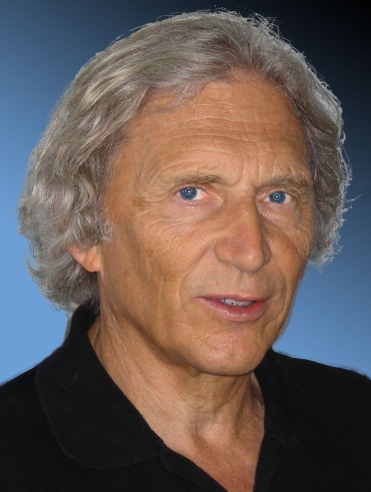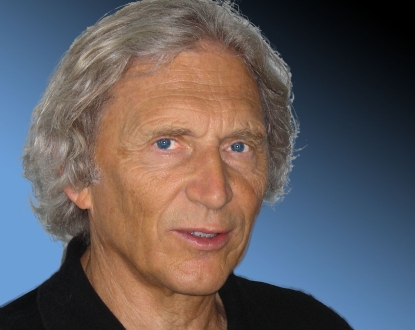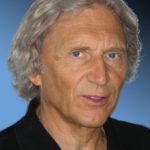At 73 years old, Nice researcher Michel Lazdunski is collecting awards for his work in medicine and pharmacology. On May 6, he received the Ernst Jung Foundation’s Gold Medal in Hamburg. For the first time, this prestigious prize has been awarded to a Frenchman, and moreover, a person from Nice. Nice Premium interviewed him about his research, which constitutes a real medical revolution.

The Ernst Jung Foundation awards the Gold Medal for a series of discoveries that have made a particular research field extremely important for medicine and medical applications.
Nice Premium: For the first time, the Ernst Jung Foundation is awarding the Gold Medal to a French person. How long did you work before achieving it?
Michel Lazdunski: The Gold Medal, whether for me or my predecessors, is a distinction that can only be obtained when it is assessed that the scientist and/or doctor has created a scientific field. It was awarded for a body of work that is the result of 20 or 30 years of research. I worked in this field that earned me the Gold Medal in the late 1970s. Before that, I worked in other fields. This research began in the 70s and 80s, at a time when there were only 2 people in the world interested in this field. We created this field, and today it includes several thousand people and has many applications in medicine.
NP: What was the main focus of your work?
ML: They mainly focused on the discovery and understanding of the mechanism of ion channels. These are molecular machines that create our bioelectricity. The electricity that makes our brain, heart, muscles, and vascular system work, and controls our hormone secretion. Of course, when bioelectricity malfunctions, there are many pathologies.
NP: What is the utility of this research for current medicine?
ML: When the electroencephalogram is not normal, there are problems at the cerebral level. When the electrocardiogram is off, there are issues at the cardiac level. When the electromyogram is off, there are issues at the muscular level. In all these terms, there is “electro,” meaning there is bioelectricity. At the base, there are ion channels that are linked to a multitude of pathologies: epilepsy, strokes, neuromuscular problems, cardiac arrhythmias, hormone secretion dysfunctions, etc. A very large number of pathologies are linked to ion channels. I could add hearing disorders and many other things. A whole series of drugs act on ion channels. Among these drugs, there are calcium blockers used in hypertension, antiepileptics, a whole series of drugs used against pain, antidiabetics, anesthetics, etc. A better understanding of these machines that create electricity in our brain, heart, and elsewhere can produce new drugs in the future to better treat pain or to fight against depression, for example.
NP: Where did you conduct your research?
ML: Most of this research was conducted in Nice and Sophia-Antipolis. First, in an institute that I created in Nice, the CNRS Biochemistry Center. After 1989, these studies continued in a second institute that I established: the CNRS Institute of Molecular and Cellular Pharmacology in Sophia-Antipolis. A number of researches, carried out by younger researchers, continue in the same institute in Sophia-Antipolis and in a third institute that I founded: the Institute of Molecular Neuro-Medicine.
NP: You have received other awards like the Silver Medal in 1976 or the Grand Prix of the Academy of Sciences. What does this Gold Medal mean to you?
ML: I’ve received many more awards. The CNRS Silver Medal in 1976 was the first scientific award. In 1983, I received a global cardiology prize, two Grand Prizes of the Academy of Sciences. With my team, I received a world prize in neuroscience. I received the Grand Prize of the Foundation for Medical Research in France, and many other awards. Most notably in 2000, I received the CNRS Gold Medal, the highest French scientific distinction. There is only one CNRS Gold Medal per year across all disciplines (literature, science, economics, physics, mathematics). In between, I have received other honors, and now the Ernst Jung Foundation’s Gold Medal. Naturally, like all other distinctions, it is extremely important. Both for myself and for all the people who have worked with me over these 30 years. There are probably more than a hundred people from over 20 different nationalities. Science is international. Of course, it is an important recognition, especially since for the first time this honor was given to a French person. The year before, it was awarded to someone who worked on immunology at Harvard University in the United States.
NP: Can you reveal what your upcoming research topics will be?
ML: The most significant research topics at the present time concern the development of completely new molecules to treat pain that we don’t know how to treat otherwise. There is a series of pain: those at the end of cancer, neuropathic pain like acute back pain, those related to amputation, and those that can occur after surgery. For this, we are trying to use patents held by CNRS. We have set up a Biotech-type company (conducting R&D programs) to try to bring these patents, these new molecules, and find completely innovative treatments for a vast number of people who suffer and do not have adequate treatments. The aim is to bring to market innovative molecules to treat pain. This will be done through a company we established in Sophia-Antipolis in connection with the research laboratory where I am today.
The second aspect of what I am doing is trying to dedicate a drug derived from Chinese medicine to stroke treatment. This is done in collaboration with the company Moleac, located in Singapore. It markets and conducts clinical trials on something derived from Chinese medicine. It’s a compound called NeuroAid™. Why this? Stroke today has virtually no treatment for at least 90 or 95% of patients. It is extremely important for such a significant pathology to finally find a drug to save people, if possible. And especially to prevent them from being severely disabled.



